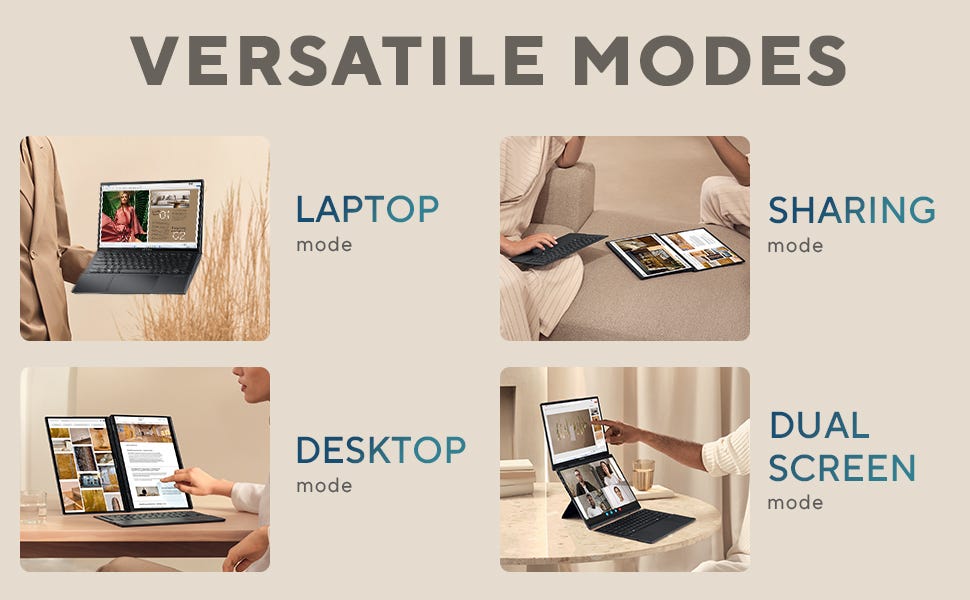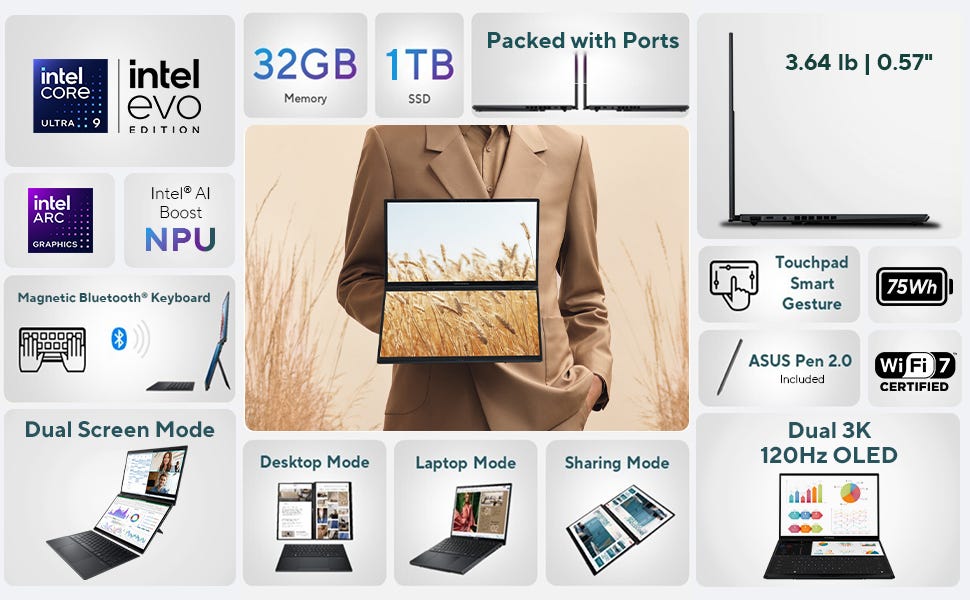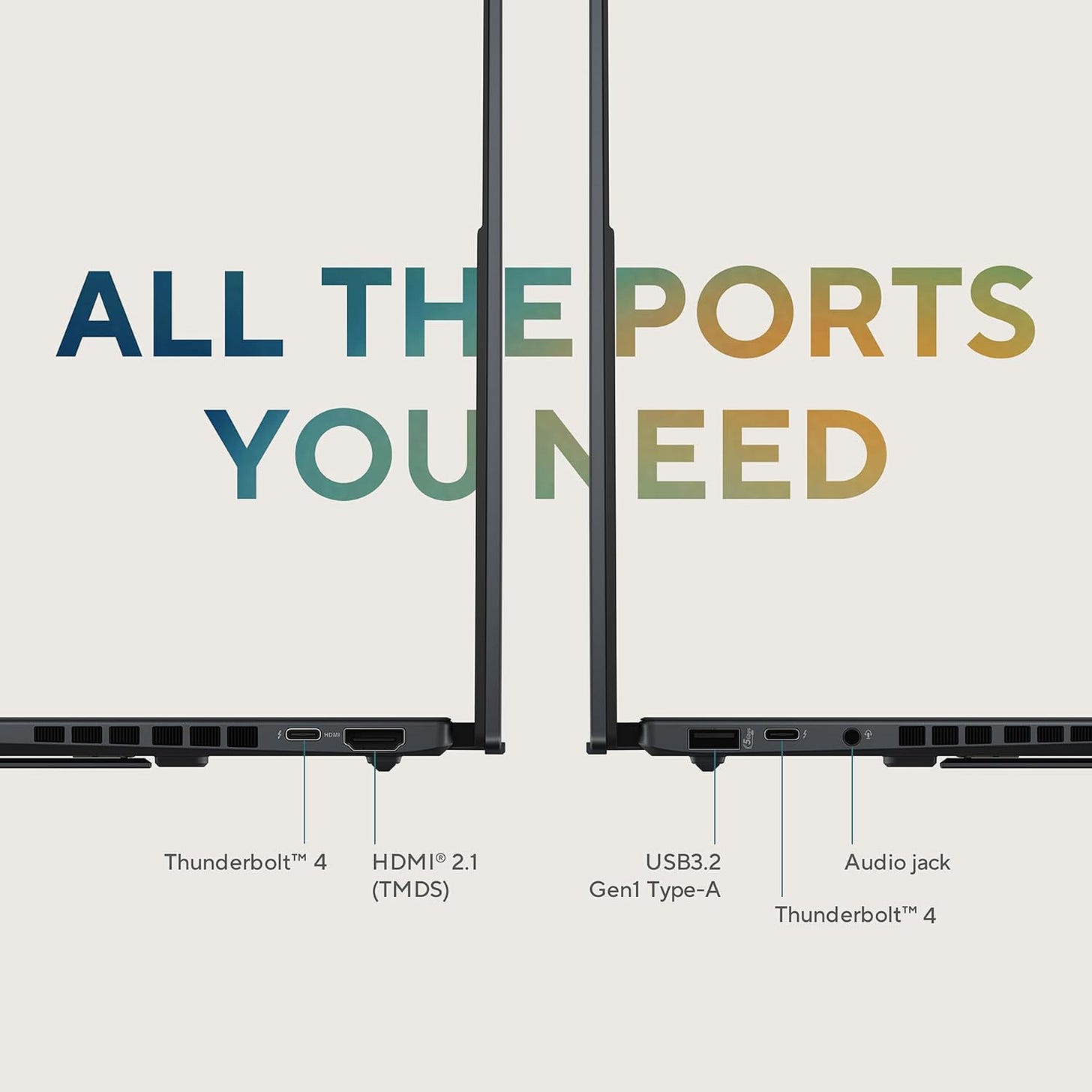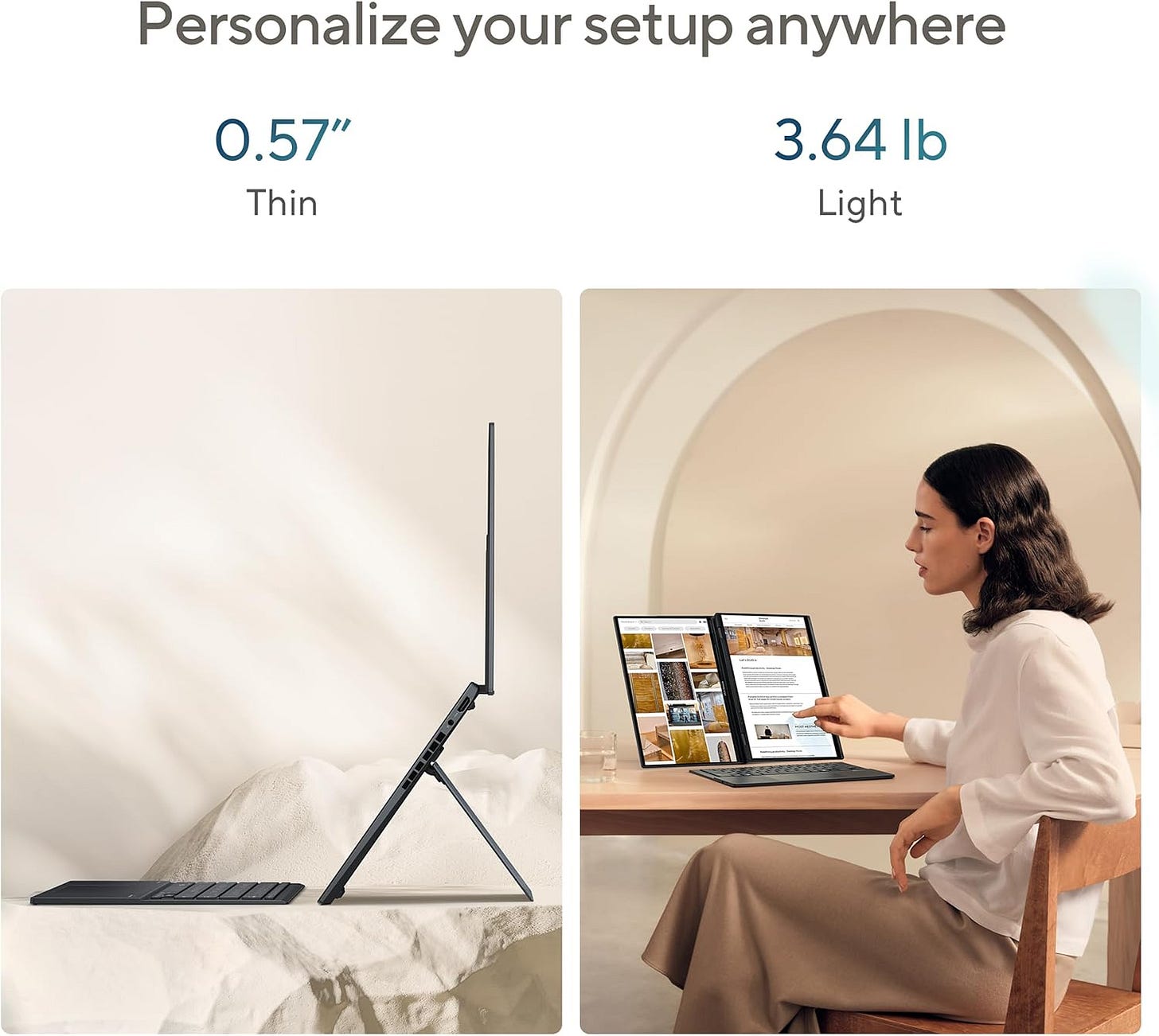Asus Zenbook Duo (2025) review: A dual-screen laptop that made me sell my iPad Pro
It's not a gimmick. It's a thoughtfully designed device that experiments with what a portable computer can be while reminding us why innovation matters.
I bought the Asus Zenbook Duo (2025) back in April, half out of curiosity and half out of a growing boredom with the sameness of modern laptops. I wasn't looking to replace a device. I was looking to see if anything out there still surprised me.
At first glance, the Duo may appear to be a regular laptop. That's part of its charm. One of my favorite party tricks is unveiling its bright OLED display, then removing the keyboard and flipping out the kickstand to reveal a second full-screen display underneath. It always gets a 'woah.'
But the real surprise is that, three months later, I'm still using it as my main machine. Not just for the novelty. Not just for demos. For work. For writing. For editing, Slack, video calls, Bluesky, streaming, and gaming. You name it.
I still have my M3 MacBook Air, which I use semi-regularly. Still, after getting the Zenbook Duo, I sold my 2024 iPad Pro earlier this month. It was beautiful, sure, but too limited. Instead, I preordered the OnePlus Pad 3, which is scheduled to arrive in July (stay tuned for that review).
Now, I wanted to write a proper, real-world review — not after a week of testing, like many reviews out there, but after months of truly living with it. Because the Zenbook Duo isn't just a cool gadget. It's one of the first laptops in a long time that feels like a true rethink of what a portable computer can be.
First, some context
Because we're at a weird point in consumer tech. The dominant players are refining, polishing, and toning down physical innovation while focusing on software innovation due to the AI boom. The magic of surprise and delight hardware is currently hard to find.
Apple is a good example of this (and frankly, it isn't even getting the AI part right yet).
As I wrote back in April, around the time I bought the Zenbook Duo, Apple used to be the one throwing punches but is now guarding its walled garden with a corporate clipboard protecting shareholders and supply chains.
Meanwhile, companies like Asus and Lenovo are doing something more interesting. They're experimenting again, not with gimmicks, but with practical, form-shifting utility.
And the Zenbook Duo is a perfect example of that shift. It's not a gimmick. It's not a flex. It's a well-considered, thoughtfully executed idea that has genuinely changed how I think about (and even enjoy) workflows.
How I use the Zenbook Duo
For context setting, the Zenbook Duo features two 14-inch 3K OLED touchscreens (2880 x 1800, 120Hz), one positioned where you'd expect it and another located under the removable, wireless keyboard. It comes with a built-in kickstand, Asus Pen 2.0, and a magnetic, detachable Bluetooth keyboard, all of which are included in the box. No extra accessories or workarounds needed for these. The dual 16:10 touch displays are gorgeous, with Dolby Vision support and 500-nit HDR peak brightness.
Some ways I use it day to day:
I'll run DeckBlue (a TweetDeck-style dashboard for Bluesky) on the bottom screen while writing or editing on the top.
When I want to kick back, I put the Duo on the living room coffee table, prop it up with the stand, and type from the couch using the wireless keyboard.
Sometimes I'll line up both screens horizontally for a typical (but mobile) dual-monitor setup, which is super handy for research or outlining projects.
And yes, I watch NBA games on the bottom screen while responding to messages or browsing the web on the top. Zero judgment, okay?
It's also become a great alternative for gaming. I play Steam titles locally, but I also use Xbox Cloud Gaming and Game Pass, which is incredibly easy to access here thanks to the dedicated Xbox app. Just turn on the paired controller, tap a button to open the app, and start playing. No browser tabs, no clunky setup.
Even the Asus Pen gets more use than I expected. It's excellent for quick annotations, sketching rough diagrams, or taking handwritten notes during meetings. Windows 11 handles stylus input well enough these days that I don't miss my iPad Pro at all. My only complaint with the Pen is that it doesn't magnetically stick to the device, so you always have to have it loose somewhere.
Other specs and performance
My Duo configuration includes:
Intel Core Ultra 9 285H processor with Intel AI Boost NPU
32GB LPDDR5x RAM
1TB PCIe 4.0 SSD
Intel Arc graphics
Wi-Fi 7
Dolby Vision support
MIL-STD 810H durability rating (though "military grade" claims always feel more marketing than meaningful)
It's fast. I haven't encountered any noticeable slowdowns — even with multiple apps, browser windows, and video running simultaneously across both screens.
Battery life is what you'd expect from a machine driving two 3K OLED panels: Asus claims up to 16 hours with one screen and 9 hours with both. In real life, I've consistently gotten around 8 hours in dual-screen mode with screen brightness up and a typical workload. Single-screen mode can stretch into double digits, but don't expect 16.
The return to Windows 11 and life outside the walled garden
I still keep my MacBook Air around, but I mostly shifted to Windows 11 and Android to really put the Zenbook Duo to the test.
My Pixel 9 Pro syncs cleanly, and Windows has matured into an OS that's actually pleasant to use across both screens. Snap layouts, stylus input, and multitouch gestures all work.
Yes, there are occasional glitches. However, macOS also has bugs. Every platform has rough edges, and someone would be foolish to say otherwise. I've reached the point where I want to use hardware that's interesting again, and I'm willing to be OS-agnostic to get there.
This is incredibly easy in 2025, thanks to cloud syncing and many apps having cross-platform support. For me, it started with the Google Pixel 7 Pro, and then I fell down the rabbit hole from there.
Final Thoughts
The Zenbook Duo (2025) isn't for everyone. If your job primarily involves email, Slack, and web browsing, a simpler machine with just one screen may suffice.
But if you write, edit, research, sketch, game, or present and want a laptop that can shape itself to your workflow instead of the other way around, this is an innovative, well-executed rethink of the form factor.
My only real knock? The weight. However, it's not a significant concern, and much of the discussion surrounding its weight is overblown. My day job provided me with a 14-inch MacBook Pro, so I've had the opportunity to compare. The Duo is only slightly heavier, but it offers dual OLED touchscreens, a stylus, a kickstand, and a detachable keyboard.
This is a rare device that's both fun to use and genuinely productive. At a price point close to that of a similar-spec MacBook Pro, the value here is compelling. It feels like you don't just get a laptop, but instead, you get a modular setup that can be a portable studio, a dual-screen workstation, or a cloud gaming rig, depending on your mood.
For me, it's been a refreshing reminder that real innovation is still happening in consumer tech. You just have to be willing to look beyond the usual suspects and branch out from what everyone else is using.








